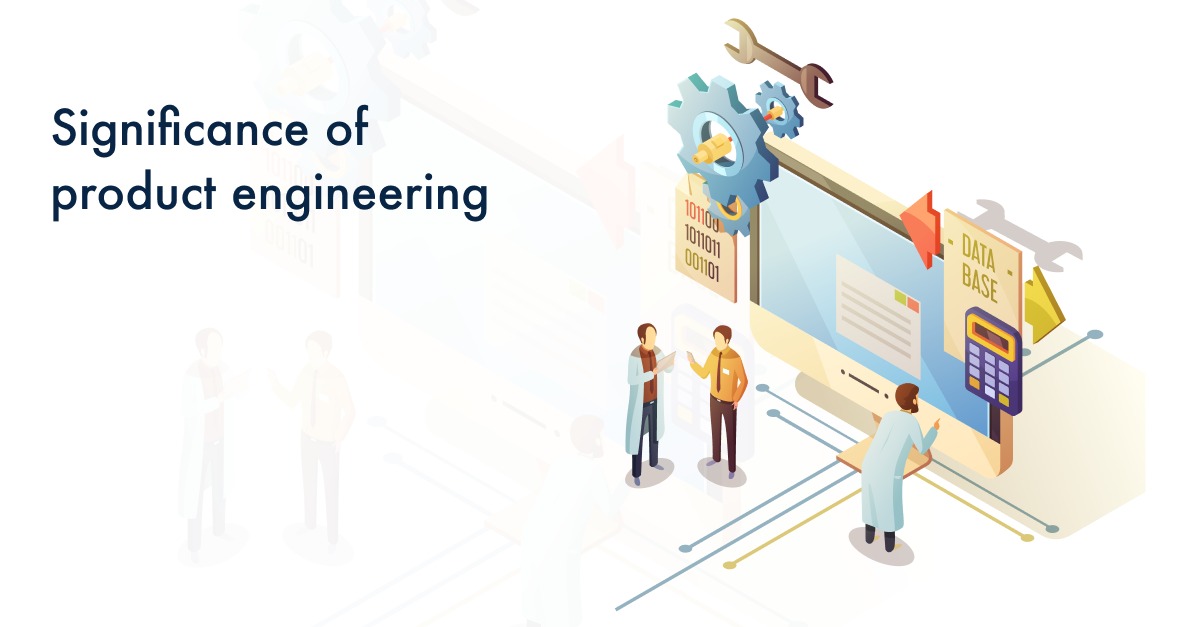Product engineering is a framework that aims to maximize the value of a product throughout its lifecycle.
Recent technological advancements such as AI, automation, and low-code development have made it imperative for businesses to adopt a battle-tested approach. Each year, thousands of new software products are launched by companies and entrepreneurs, with some succeeding beyond expectations while others failing to take off due to poor construction, misaligned pricing, or lack of appeal to a wide audience.
Even major corporations have had their share of underwhelming products over the years. To improve the odds of creating successful and lasting products, businesses need to invest in product engineering and adopt a product engineering mindset.
Most companies understand the importance of product operations and how it forms the core value of their business.
However, flawed processes often result from a failure to account for all the intangibles associated with digital product innovation, such as quality processes and automation, the ability to quickly bring new features to market, integration with other software, scalability, security, continuous integration and deployment, and other factors. By embracing product engineering principles, companies can optimize their products and drive success in a highly competitive market.
What is Product Engineering?
The concept of product engineering encompasses a comprehensive framework aimed at maximizing the value companies derive from their products throughout the product’s lifecycle. In essence, product engineering is the process of transforming ideas into marketable products to promote innovation and ensure companies remain competitive.
There are three main areas of product engineering that companies must consider to succeed.
- First, creating new products is essential for companies to stay relevant and meet changing customer demands. This process requires various efforts, including prototyping, testing, and quality assurance, which must work together seamlessly. Therefore, companies need a sound strategy and a reliable partner to ensure that they meet their goals.
- Secondly, companies must transform their legacy products and platforms to remain relevant in the market. This could involve upgrading existing products through app modernization instead of creating new ones.
- Finally, rationalizing systems is critical in ensuring a smooth product engineering process. This involves updating and modernizing disjointed systems that can hinder the development process and create delays.
To ensure that product engineering is successful, companies must have a strong product development mindset that includes strategically selecting technology, architecture, and design principles. In addition, companies need flexible engineering solutions that can adapt to the changing market trends and demands.
Approach to Product Engineering
The product engineering transformation involves much more than merely creating new products; it requires creating a fundamental framework for a product-oriented company. To accomplish this, there are several approaches, including:
- Identifying white spaces: Engineers can use their expertise to help companies identify new products and audiences that do not yet exist, along with conducting competitive analysis.
- Prioritizing product features: Companies must continually monitor the potential for bloat and make tough decisions on what features genuinely make the product valuable.
- Ensuring product-market fit: It’s essential to put time and effort into determining the audience for a new concept and whether there is sufficient demand to meet costs and turn a profit.
- Incorporating security throughout the entire product lifecycle: Product engineering teams now work directly with IT and security professionals to build security best practices from the ground up in coordination with product ideation and prototyping.
Incorporating all of the above approaches is essential for a successful product or platform engineering strategy. However, many factors can interfere with effective product engineering. Successful product engineering is not just about creating new products but also establishing a framework that aligns product development and legacy transformation with key business objectives.
This framework should be iterative, adaptable, and anchored to clear goals. To achieve this, companies need to have the right skill sets within their internal teams or by working with external partners.
However, legacy teams managing existing products may require assistance in adopting new technologies. Above all, the product engineering strategy should provide structure and predictability, reducing surprises and dead ends. By doing so, companies can better serve their customers, improve productivity, drive cost savings, and outpace their competition by bringing new products to market and updating existing offerings.
If any of these pieces are missing, product development may seem aimless and fail to drive business goals forward, leading to substandard product quality. Successful product engineering requires the right talent, framework, and structure to deliver repeatable success.
Thank you for reading. For continued insights and in-depth discussions, please follow our blogs at Ezeiatech.







